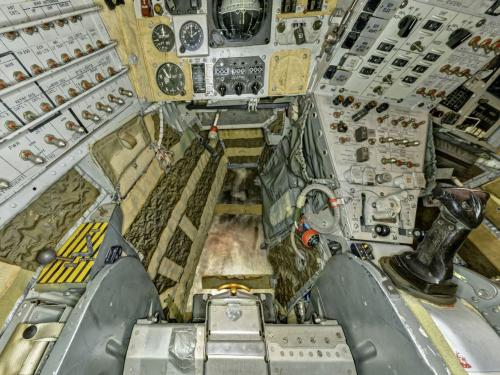Astronauts Frank Borman and James Lovell were launched into orbit aboard this spacecraft, Gemini VII, on December 4, 1965. Their primary mission was to show that humans could live in weightlessness for 14 days, a record that would stand until 1970. Gemini VII also served as the target vehicle for Gemini VI-A, piloted by Walter Schirra and Thomas Stafford, who carried out the world's first space rendezvous on December 15. These two achievements were critical steps on the road to the Apollo Moon landing.
This module is the only part of Gemini that returned to earth. Behind the heat shield was an adapter section containing propellants for the maneuvering thrusters, fuel cells for electric power, and retrorockets. It was jettisoned before reentry. The nose section was discarded during parachute deployment. In 1968 the National Aeronautics and Space Administration gave Gemini VII to the Smithsonian.
This object is on display in Destination Moon at the National Air and Space Museum in Washington, DC.

James A. Lovell Jr.
For more information, visit the Smithsonians Terms of Use.
